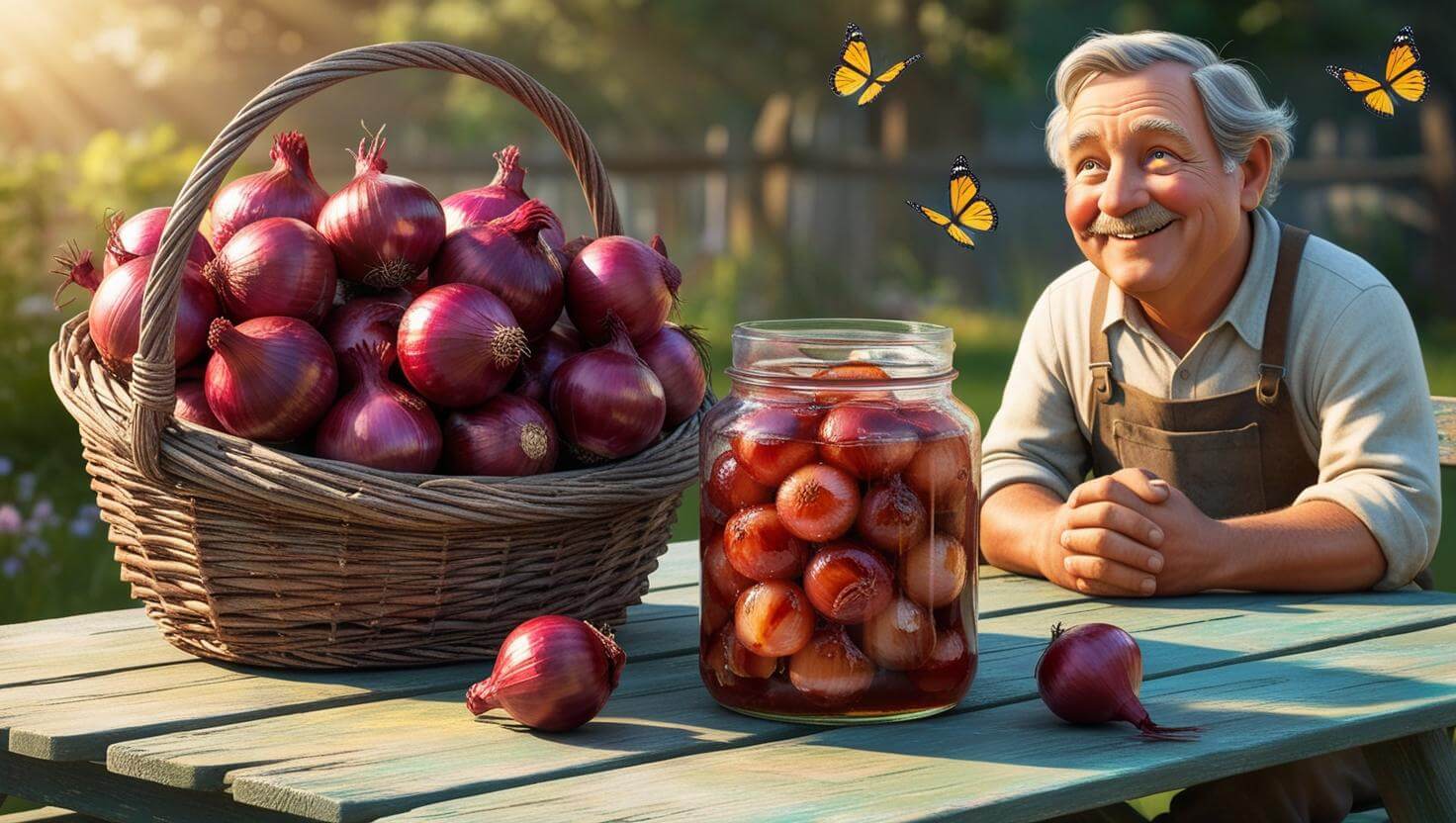Read by Michael Flamel

The Red Onion Legacy: My Dad’s Bold Flavor Obsession
In our house, red onions weren’t just an ingredient—they were a way of life. My father, a professional chef with an iron stomach and an insatiable palate, had a peculiar habit: he loved eating raw red onions, sprinkled with nothing more than salt and pepper. Watching him crunch into those pungent, ruby-hued slices with pure delight was fascinating—though I learned early that my own digestive system was not up for the challenge. “You’ll build up a tolerance,” Dad once quipped, but alas, I never did.
Beyond his raw onion snacks, Dad’s culinary creativity made red onions the star of countless dishes. There was always a jar of caramelized red onions in our refrigerator, their sweet, tangy aroma teasing us as he reached for them nightly. He’d spoon them over everything from burgers to roasted vegetables, or swirl them into pasta sauces for that unmistakable depth of flavor. For him, red onions weren’t just a garnish—they were a celebration.
A Brief History of the Red Onion
The red onion has been spicing up kitchens and gardens for centuries. Originating in Central Asia, these striking alliums spread along ancient trade routes, eventually reaching Europe and the Americas. By the time Columbus brought onions to the New World, they were already beloved for their versatility, long shelf life, and ability to add a little zing to any meal.
Interestingly, red onions weren’t always red—or at least, they weren’t called that. In the UK, they’re often referred to as “purple onions,” though the exact shade of their papery skins can range from deep magenta to violet. Whatever you call them, these beauties have made their mark as a colorful, flavorful addition to global cuisine.
Growing Red Onions: Tips for Gardeners
Red onions are surprisingly easy to grow and a favorite among gardeners across North America. They thrive in well-draining soil with plenty of sunlight and prefer cooler weather, making Spring or Fall the best planting seasons. If you’re new to onion gardening, look for sets or seedlings labeled as “short-day” or “long-day” varieties, depending on your region.
- In-ground Gardens: Red onions play well with others—most of the time. They’re excellent companion plants for carrots, beets, and lettuce, but they don’t get along with legumes like peas and beans. Give them a sunny spot with plenty of airflow to prevent fungal issues, and you’ll have a bountiful harvest in no time.
- Container Gardens: Yes, you can grow red onions in pots! Choose a container that’s at least 8 inches deep and wide enough to space the onions about 4 inches apart. Use a nutrient-rich potting mix, water consistently, and watch those vibrant bulbs thrive.
Culinary Uses: Sweet, Spicy, and Everything in Between
Red onions are the Swiss Army knife of the culinary world. Slice them thinly for salads and sandwiches, dice them for salsas, or roast them to coax out their natural sweetness. Caramelizing them brings a whole new dimension to their flavor—just ask my dad!
Some other fun ways to use red onions:
- Pickled Perfection: A quick soak in vinegar, sugar, and salt transforms red onions into the ultimate taco or burger topping.
- Grilled Goodness: Thick slices brushed with olive oil and grilled to perfection are a Summertime staple.
- Red Onion Marmalade: Spread this sweet-savory jam on crackers with goat cheese for an instant crowd-pleaser.
And, did you know that red onions aren’t just delicious? Their vibrant skins can be used as a natural dye for fabric or Easter eggs. They’re also rich in antioxidants like quercetin, making them as nutritious as they are tasty.
Fun Facts About Red Onions
- Red onions owe their color to anthocyanins, the same pigments that give blueberries their hue.
- They can be surprisingly sweet—some varieties, like “Red Burgundy,” are mild enough to eat raw without tears!
- Ancient Egyptians believed onions symbolized eternity, thanks to their circular layers. They even placed onions in tombs as offerings.
The Red Onion in Your Garden
While red onions may not be the friendliest of neighbors to every plant, their presence in your garden is undeniably worthwhile. Their ability to repel pests like aphids makes them a handy ally to certain crops. And whether you’re planting them in rows or clusters, their striking greens and purple bulbs add visual interest to any garden space.
Wrapping It Up
Red onions are more than just a zesty addition to your meals—they’re a gardener’s delight and a culinary powerhouse. Whether you’re growing them in a sunny backyard plot or a tidy container on your balcony, there’s nothing quite like the satisfaction of harvesting your own onions.
For more tips on cultivating red onions (and their white, yellow, and sweet counterparts), check out our comprehensive Gardening Guide to All Things Onions. It’s packed with advice, recipes, and fun onion trivia to make your gardening journey unforgettable. ❖


 Previous
Previous


A wonderful article about my very favorite onion. My Gran used to make picked onions, however, she used the yellow or white ones. I needed a recipe and found a lovely one in your other section, thanks so much!